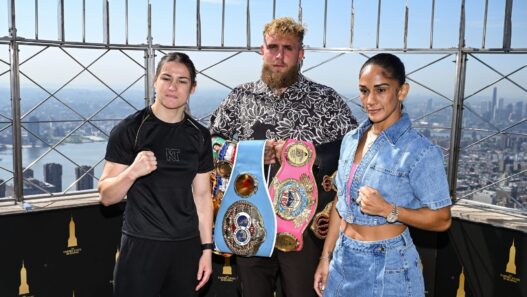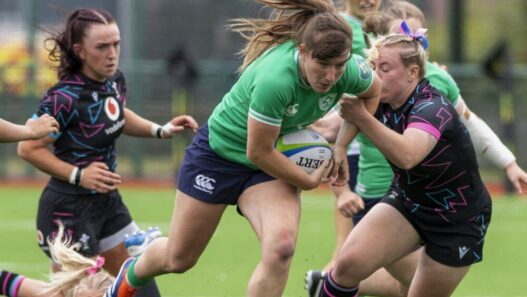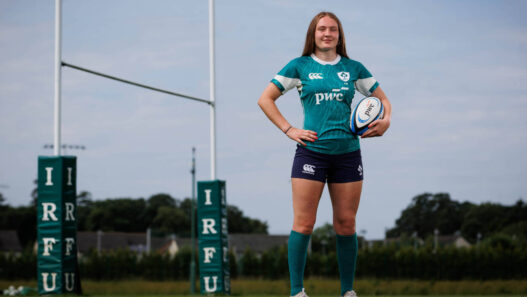Women have long been subjected to stereotypes surrounding their body. It is not uncommon to walk into a gym to see men in the weightroom and women on the cardio machines. This trend is backed up by the conventionalized female body; slim and feminine. Walking into a CrossFit gym, however, both men and women are lifting heavy barbells, testing their fastest mile time, and doing pull-ups. Seeing women with muscles is not unusual, and many can lift just as much weight as the men. CrossFit’s focus around fitness changes from what the body looks like to what the body feels like. As the health and fitness movement has boomed in the last few years, being strong has become a goal for many women, and CrossFit helps to achieve that.
For 20 years, CrossFit has been a fitness regime that has circulated around the world. It incorporates constantly varied, functional movements, executed at a high intensity to strengthen the mind and body. A combination of swimming, biking, running, olympic weightlifting, gymnastics, push-ups and pull-ups prepare athletes for any physical challenge they may face, from sports to everyday life.
According to CrossFit Inc., “We sought to build a program that would best prepare trainees for any physical contingency—prepare them not only for the unknown but for the unknowable.”

CrossFit allows for athletes to improve their health in a gym setting, but also gives them a choice to test their fitness in CrossFit competitions. For those who are looking to compete in the sport, a strict training and nutrition program is required to succeed at the elite level. CrossFit holds an annual Open competition for athletes at any level to compete in. The top 20 men and women from the Open are invited to participate in the CrossFit Games against competitors that have excelled in other sanctioned events.
Emma McQuaid, a CrossFit Games athlete and 2020’s fittest in Ireland, trains seven days a week with three to four sessions per day. A mix of cardio, strength, core, gymnastics, and power outputs, help prepare her for any event she might face in competition. She started the sport in 2014 and felt a change in her upper-body strength within the first few months.
“I couldn’t do one pull-up when I first started CrossFit,” she said, “the upper body strength was massive how quickly that changed.”
Sport was a big part of McQuaid’s life, as she competed in quad racing before CrossFit, and says that she has never had a typical female build because of it. After joining CrossFit, her muscles began to grow fast because of the amount of training she was doing. She noticed that her competitors had a similar body type and realized that muscles were a byproduct of CrossFit training.
“I would say five to seven years ago, if you were walking down the street in a top and you had muscles, people would really stare at you as if that’s wrong,” she said. “I think now, in the last two to three years, people are looking at females like, ‘wow she looks really well’, instead of, ‘she shouldn’t look like that’.”

Beáta Jung, a Hungarian CrossFit competitor who now coaches in Dublin, Ireland, experienced backlash for her body type growing up, but never let it tear her down. She competed in gymnastics before CrossFit and therefore always looked more athletic than most girls. Once she started training frequently in CrossFit, her muscles began to look bigger and more defined. It came as a shock to her parents when they noticed her new CrossFit body.
“When I started to do CrossFit I started to get muscly very quickly and then she (her mom) was like, ‘this is very manly’ and I shouldn’t look like that because I am a girl. I couldn’t understand it, I was just into sports,” Jung said.
Similar to McQuaid, she noticed that the mindset around women looking muscular began to change over time. Observers on the street would look at her in admiration rather than distaste. She said that it made her feel special because they would begin to ask what sport she was a part of and were interested in how she got her body to look so fit.

CrossFit Games athletes represent the top one percent of all CrossFit members. Between the strenuous training and strict diets, their body types tend to look more muscular and defined than that of an average CrossFitter. Every athlete’s body is different, but an increase in strength and muscle definition is a result of the training method, regardless.
For most, CrossFit is used to get fit, stay healthy and perform better at sport outside of the gym. Ruth McGlynn and Éva Kelly both became members at Unit 1 in Dublin, Ireland after owner Claire McGlynn persuaded them to try it. At first, they were afraid of the difficulty of the movements and how strong the other members were. It was the community that kept them coming back. CrossFit is known for its unique community and that plays a large role in the success of its athletes. All members start out at different skill levels, so the programming is modified to provide the best workout for an athletes abilties. Everyone at the gym knows eachother, cheers eachother on during workouts, and provide social support.
Ruth and Kelly workout four to five times a week and do not follow a strict nutrition plan. By eating healthy and consistently joining in on the classes every week, they have experienced personal growth in their strength and physical capabilities.
McQuaid and Jung agree that women will not gain an abnormal amount of muscle while doing CrossFit. Studies have shown that during the period of “newbie gains”, or an initial explosion of muscle gain within the first few months of training, a woman will obtain around half to one pound of muscle per month.
“You’re not going to gain,” McQuaid said, “it’s just not realistic.”
Jung has experienced several clients who were afraid to pick up weights to avoid a “bulky” build. She tells her clients to look at her body type. She has been competing in gymnastics and CrossFit for most of her life and reassures them that she does not look bad.
For Ruth, she was not worried about bulking because of her sister’s influence, but said that other people were noticing her body change before she did. She was more excited about how strong she was getting and is now able to do pull-ups in workouts and is lifting heavier weights. Going to the gym is not just about looking fit, but feeling fit.
Claire believes CrossFit is breaking female body stereotypes because of the athletic build that comes with consistency. This body type is more accepted in society as women in the health and fitness sector is gaining popularity. She said that men are beginning to realize that women can be stronger than them. At Unit 1, some of the men are inspired to work harder when the women are performing better than them in workouts.
”We can be strong in our own right,” Ruth said.
The health and fitness movement has exploded in the past few years and CrossFit continues to support this new female body type. CrossFit aims to strengthen athletes mentally and physically to help performance in sport and their everyday lives. Strong is becoming the new skinny.








